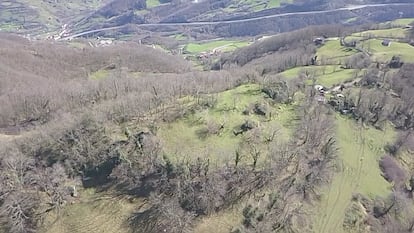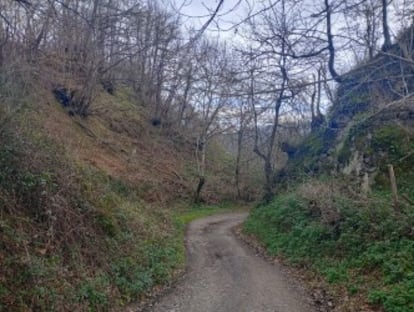Between the 2nd and 4th centuries AD, at the height of the decline of the Roman Empire, groups of dangerous bandits devastated the Huerna valley (Asturias). These associations of evildoers were known as bagaudas and consisted mainly of abandoned Roman soldiers, slaves and outlaws. Thus the indigenous population created a network of fortifications (castros) which became small centers of local power. Instability occurred again in the 8th century, but this time it came from the Muslims who had just invaded the peninsula. Faced with the dangerous situation, Huerna’s social elite reoccupied an ancient Asturian fort, strengthened it with large walls and towers, and transformed it into a proud feudal fortress. However, in the 13th century all traces of it were lost, but it has now been found under a hill and is considered, according to the study, to be the second oldest medieval castle in Asturias. The castichu of Tiós, a new fortress of the medieval kingdom of Asturias.
The fortress stood at 766 meters above sea level, oriented from east to west, on a slope from which you can see the entire central part of the verdant Huerna valley. Its defenses were mostly natural, with a wide valley acting as a ditch on the northern slope, a natural rise on the southern and eastern slopes, and a lateral counter-ditch on the western slope. Thus a vast defensive passage of large dimensions was formed, partly artificial and partly natural. The upper area of the hill, where the castle was built, was terraced, but today it is very deformed, probably due to the traditional stonework.
The authors of the study – Alfonso Fanjul Peraza, Alfonso Sánchez Pozo, Verónica Estaca Gómez, Saul Manzano Rodríguez and Juan Manuel Rubiales Jiménez, of the Complutense universities of Madrid and León – recall that the first occupation, according to the carbon-14 analysis, occurred between the third and fourth centuries. “Waiting”, they add, “for the Bagauda groups and the arrival of the barbarian invasions, in a context in which the security of the Roman Empire had failed”. Already in the 8th century, “and given the instability of the last years of the Visigothic kingdom and the Muslim invasion”, the original Asturian fort was reinforced, transforming it into a castle “of great local importance” which would last until the 13th century.
On the medieval remains, specialists have found, during surveys and stratigraphic cleaning, bones of cattle, goats, pigs and a canid. “It is significant that all the animals are adults, except two, since this indicates that they were brought to the peak of maturity to exploit everything that they could give them in life, be it milk, wool, manure or labor force, and when they could no longer produce more, it was then that they were consumed. Of particular interest appears the consumption of the suckling pig (pig breeding), among the remains of the fortress diet of the Kingdom of Asturias, being a clearly aristocratic dietary element, completely alien to the general feeding patterns of the population”.
Experts point out that, “from a chronological point of view, we can assure that, together with the fortress of Gauzón (council of Castrillón), the Castichu de Tiós represents the second fortress with the oldest chronologies of this kingdom in the 8th century, when its construction began.”

And they conclude: “This castle, until now unknown, had great strategic importance since it guarded the three main communication routes, which descend from the mountain passes into the interior of the Kingdom of Asturias, and whose continuity in the landscape as a feudal tower is attested by carbon 14 samples.”
The discovery was made as part of the so-called Pintaius Project, which aims to catalog all the forts in the Huerna Valley. The first data we have on them come from some “news” from the 18th century, although only in the middle of the last century, with the work of JM González, were the first archaeological inventories created.
In total, half a thousand fortified sites have been cataloged in the region, of which 200 appear to be fortresses from prehistoric and Roman times, while another two hundred correspond to turrets and feudal fortified structures. The remaining “are devoid of any archaeological reality and have been admitted in the official censuses, sometimes, by their historical toponym “the castle, Castiechucastro…”.

The Pintaius Project, financed by the Municipality of Lena (11,200 inhabitants), takes its name from a historical figure of the same name, “an Asturian from the Orniacos (local tribe) born in castellum of Intercatia (fortification in some as yet undetermined place in Asturias) e significant (the officer who carried the standard) of the Roman army on the German border, where he died, and his famous funerary stele (found in the Bonn Museum) is dedicated to him”, conclude the experts.



